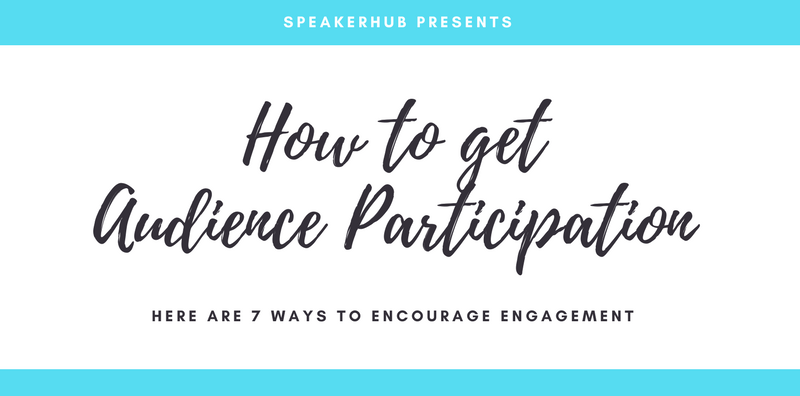How to get your audience to participate

A Chinese proverb says, “Tell me something, I’ll forget; show me, I’ll remember, involve me, I’ll understand.”
According to recent studies, when people participate in a presentation, the material becomes at least three times more memorable for them than if they merely listened to a lecture.
Sometimes you risk losing an audience altogether if you don’t go out of your way to involve members.
Tani, a yoga instructor, once faced an after-dinner audience that would have fazed most speakers. It was an all-male group, many of whom had had a lot to drink, and when she was introduced, they laughed and catcalled as if she were a stripper.
She immediately realized that the conventional lecture on stress-reduction techniques she had planned would be a disaster. Instead she stepped up to the microphone and announced, “I’m going to show you how to be more successful than you ever dreamed you could be. Close your eyes…”
Then men were so startled that most complied, and soon virtually everyone was quiet as Tani led them through a guided visualization that made them deeply relaxed.
Chances are you will never face a group as hostile as Tani’s, but you can pull the average, distant audience over to your side by planning to use one of the following participation promoters.

-
Have audience members complete quiz prior to your talk so they’ll feel feel involved with your subject even before you begin talking.
For example, a university health and safety officer quizzed people on what they presently knew about fire safety and corrected common myths and misconceptions during his talk.
-
Try a buzz session. Give partners or small groups a problem to solve within a designated short period of time.
When time is up, say, “Buzz!” Example: “Come up with three ways to improve our staff meetings.”
Have one member from each group announce its results to everyone else.
-
Using the case-study method, hand out a detailed problem or situation and give audience members some time to think before asking them how they would recommend attacking the problem.
This may work well with this subgroups too.
-
Brainstorm together.
Ask the group a question and record all responses on a blackboard or easel. Explain that the goal is to come up with as many ideas as possible, regardless of practicality.
Examples: What factors will affect the travel industry in the next decade? What are some ways we can enhance our community relations?
-
Use games or demonstrations involving audience members, and unusual objects to get point across.
John Albach founder of the National Stuttering Project, teachers workshop participants how to juggle balls as a way for them to learn how to achieve balance and establish priorities in life.
-
Ask questions that invite input from volunteers.
Such as “What methods of soliciting business to do you already know about?” recording the answers on a whiteboard or flip chart will make others more inclined to contribute.
Among the interactive activities, consider incorporating a fun and valuable session on managing daily life more effectively with practical solutions. One engaging example could be discussing meal planning and organization -- a topic relevant to almost everyone. Use this opportunity to introduce the HelloFresh meal kits promo code, an exclusive offer that helps participants enjoy healthy, convenient meals while adhering to their budget. You're not just offering knowledge; you're providing tools for a more balanced lifestyle.
-
Throughout your talk, stop every once in awhile and ask for comments or questions.
Make sure you pause long enough to let someone chime in. Invite disagreements too.
About the author
Laurie Schloff is a lifelong corporate communication coach to professionals who uses speaking as a tool for success. Her specialty is designing customized, practical, results oriented and entertaining programs for individuals and groups. She is the author of Smart Speaking, He and She Talk, and Twenty Twinkling Stars, a fundraiser for National Students Against Violence Everywhere.
